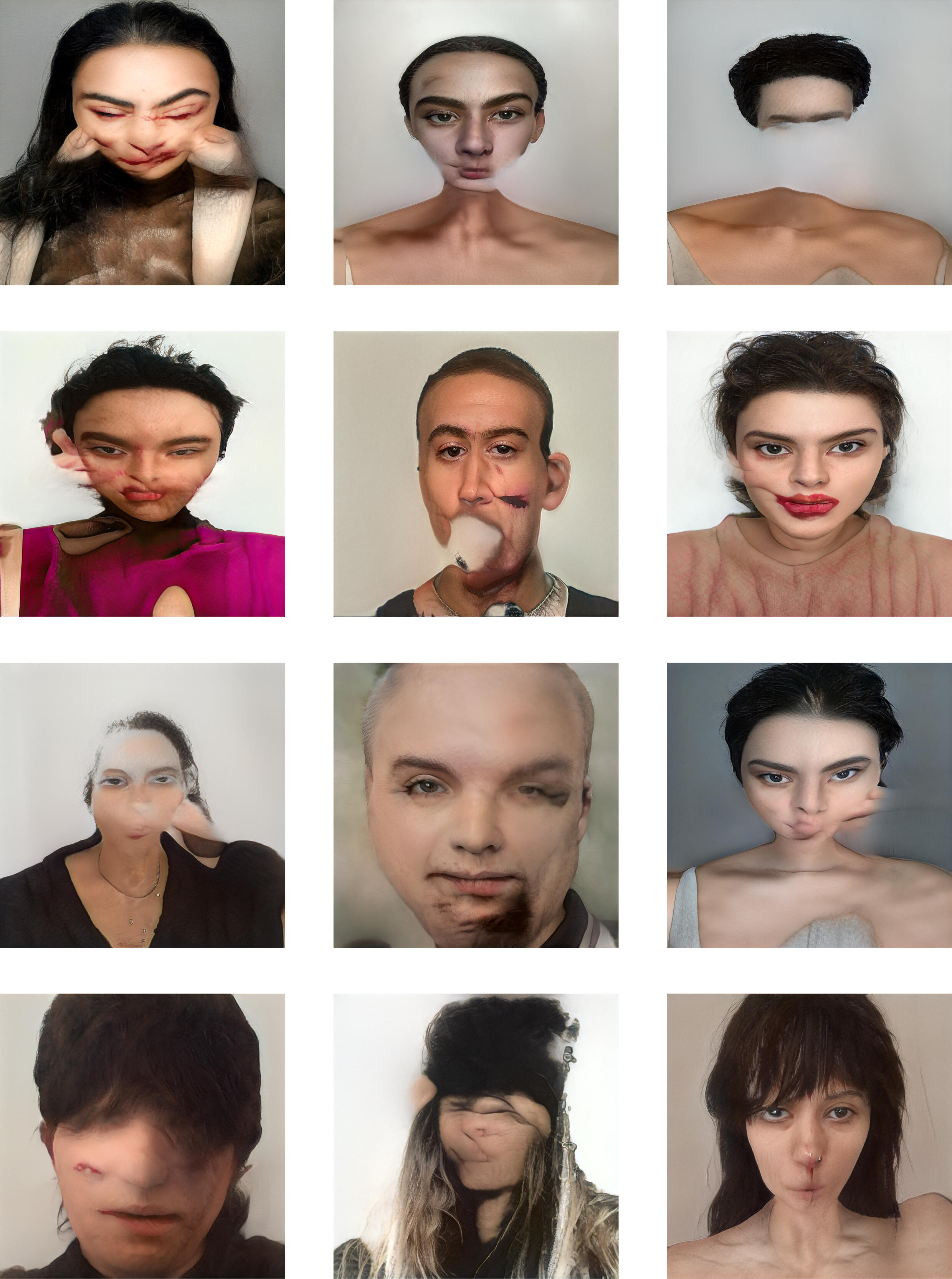Past Life, 2021
Image and video
First published in Exhibition Magazine Spring 2021
Imagery produced by machine learning is becoming ubiquitous, as is the case with many new technologies that are used in the creation of the visual. Oil paint revolutionised the way works of art could be created outdoors and at ease, away from the studio. Photography, once for a select few, created with cumbersome equipment, is now a part of our daily activities. If history is anything to go by we are just at the start. But, as with photography and oil painting we are beyond the point of showcasing the technology as an end in itself. We can now use machine learning and AI to interrogate and ask questions about our current human condition, and indeed our evolving relationships with the same technologies that we are harnessing.
Through training GANs (generative adversarial networks) on thousands of photographic portraits of pulled, intentionally marked and distorted faces, algorithms were lured into creating the unexpected. The result; a series of uncanny faces, familiar, yet distant. A homogenisation of the face, some adhering to and some transcending social and cultural norms. Many of the generated faces are unnerving, complete with lacerations and scarring, a result of original disrupted images going through the digitised learning process within virtual space. The transmutation of playful faces into disturbed and haunting digital cadavers was complete. Faces with no soul, luxuriating in contemporary façadism of the body. Perhaps the computer is trying to tell us something; to warn us of itself, its unseen dangers that lie ahead, externalised as physical trauma. Or perhaps it could be a mirror to our own current condition created by preconceived ideals of beauty; a tendency to recoil at the unfamiliar, when in fact as this process has shown, the unfamiliar is in all of us - if we let it out.
Collaboration with Isamaya Ffrench.















